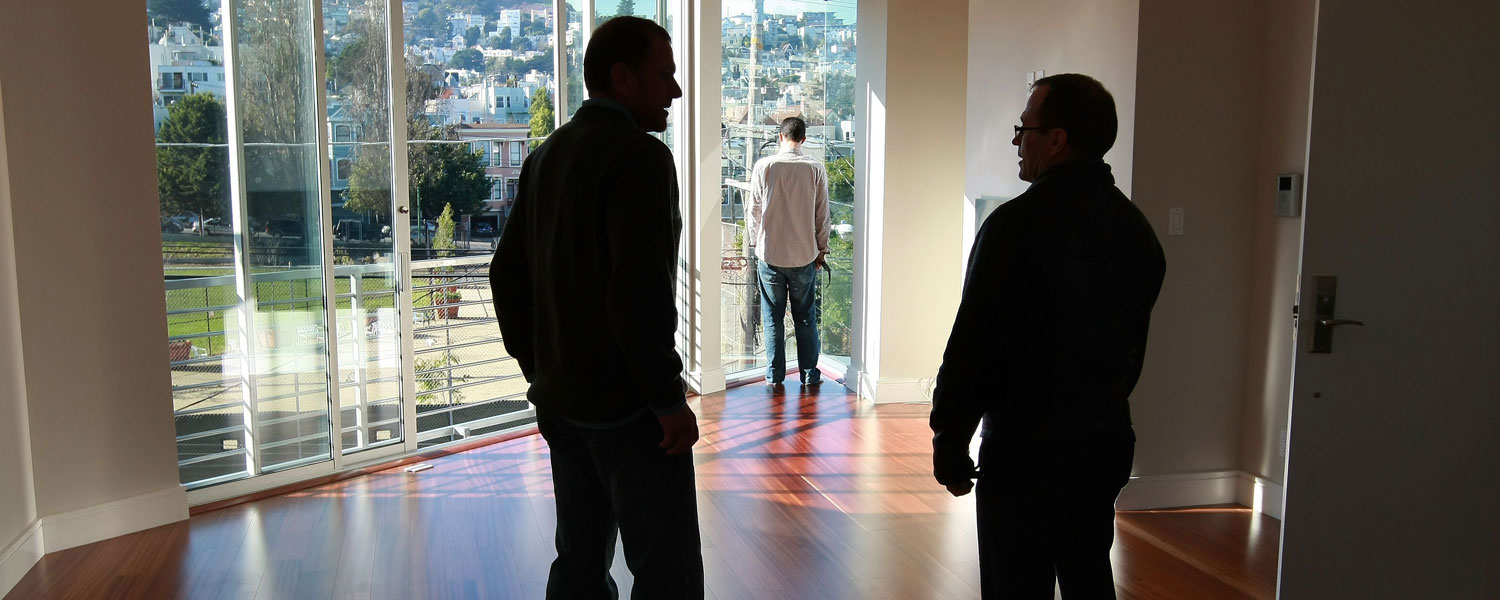
<p>Real estate agent Brad Smith (R) talks with potential home buyers as they look at a newly constructed condominium December 30, 2008 in San Francisco, California. Photo by Justin Sullivan/Getty Images.</p>
In October 2014, San Francisco quietly passed a significant milestone. Over the previous year, more than half its home sales were worth at least a million dollars. Since then, million-dollar home sales have risen to 65 percent of the city’s market, up from 26 percent in 2011.

Some blame the rapid rise in million-dollar homes on developers’ greed—building large, luxury condominiums, they say, leads to gentrification and pricier homes. Those new glass-covered buildings do sell for a high price, with some units selling for more than $10 million.
This has led some to argue for limiting the construction of market-rate housing in the city and to focus instead on building affordable housing for the most vulnerable. This is an important and necessary goal, as the Urban Institute has documented in a number of publications, but this solution doesn’t have to restrict market-rate housing.
New evidence from Urban’s data scientists, using data from the city’s Housing Inventory and Office of the Assessor-Recorder, contradicts the claim that a rise in million-dollar homes is primarily because of new construction. In 2016, at the height of the million-dollar home market of the past eight years, only 10 percent of home sales worth a million dollars or more were located in new complexes.
In other words, most million-dollar luxury sales come from existing housing stock, which, in many cases, is decades older than new units.
Of course, renovations of existing buildings and smaller construction projects might also play a role, but the data available indicate these are small factors. San Francisco’s building permit data show that just 2 percent of units spent at least $250,000 on a renovation or new construction project of less than 10 units, while new construction in buildings of 10 units or more represented 4 percent of the city’s units.

Notes: Data collected from the City and County of San Francisco Office of Assessor-Recorder and Planning Department for 2009 to 2016. Only about ~90% of addresses are included due to geocoding errors. All dollar values are adjusted to month 2, 2017 dollars by the Bureau of Labor Statistics Consumer Price Index, All Urban Consumers, Not Seasonally Adjusted, for San Francisco-Oakland-San Jose, CA All items less shelter, series CUURA422SA0L2. New Construction indicates owner-occupied developments built in 2009 and later with 10 units or more. Data on the map represents all sales within a one year window from the month shown. The series of images represents February of the shown year. New construction only includes reported new construction until 2015, the last year the Planning Department released the Housing Inventory. Map layer derived from ©Mapbox , ©OpenStreetMap data. Click here to improve this map.
So what is driving the rapid rise in high-priced housing? The primary factor is that the demand for housing in the region has outstripped new supply. Between 2010 and 2015, as million-dollar homes became commonplace, the region added six times as many jobs as it did housing units, despite Census data indicating that people typically lived just two or three to a unit.
The region built office space, but not enough living space.
Many solutions to this issue are being considered, from easing regulations on second dwelling units on single-family lots, to reforming state environmental regulations, to streamlining approval for “infill” housing, but preventing new market-rate—or luxury—housing should not be one of them.
Let’s build a future where everyone, everywhere has the opportunity and power to thrive
Urban is more determined than ever to partner with changemakers to unlock opportunities that give people across the country a fair shot at reaching their fullest potential. Invest in Urban to power this type of work.